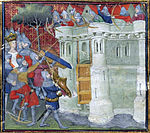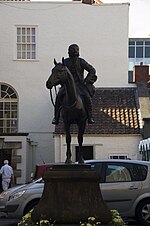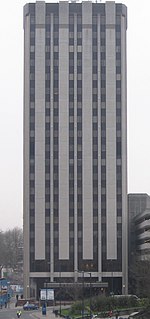Quakers Friars

Quakers Friars (grid reference ST592733) is a historic building in Broadmead, Bristol, England. The site is the remains of a Dominican friary, Blackfriars that was established by Maurice de Gaunt, c. 1227. Llywelyn ap Dafydd the eldest son and heir of Dafydd ap Gruffudd (Prince of Wales 1282–1283) was buried here in 1287. He had died while imprisoned at nearby Bristol Castle where he had been confined since 1283. The friends meeting house was built in 1747–1749 by George Tully, with detailing by Thomas Paty, as a Quaker meeting house. The building has recently been used as a register office, before being renovated as part of the Cabot Circus development. As of October 2020, the Quakers Friars houses a German-themed restaurant called Klosterhaus.It has been designated by Historic England as a grade I listed building.William Penn was married, 1696, in an earlier building on the site.It is a Scheduled Ancient Monument.
Excerpt from the Wikipedia article Quakers Friars (License: CC BY-SA 3.0, Authors, Images).Quakers Friars
Quaker's Friars, Bristol Broadmead
Geographical coordinates (GPS) Address Nearby Places Show on map
Geographical coordinates (GPS)
| Latitude | Longitude |
|---|---|
| N 51.457222222222 ° | E -2.5877777777778 ° |
Address
Quaker's Friars
Quaker's Friars
Bristol, Broadmead
England, United Kingdom
Open on Google Maps










